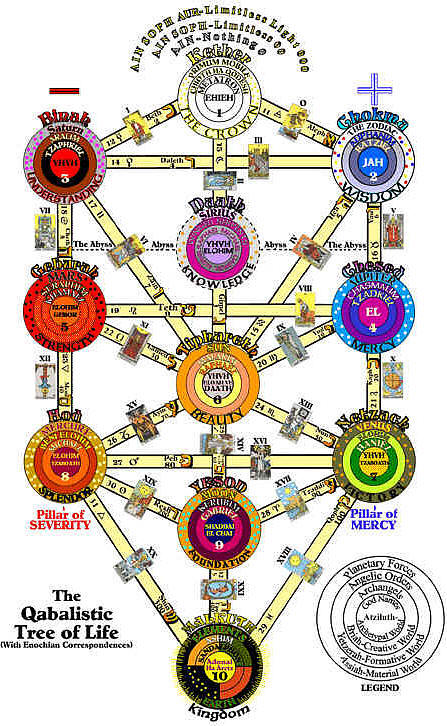Kabbalah: (noun) from medieval Latin cabala, cabbala, from Rabbinical Hebrew qabbālāh ‘tradition’, from qibbēl ‘receive, accept’
: a medieval and modern system of Jewish philosophy, mysticism, and thaumaturgy
____________________________________________________
It is based upon tradition said to have been handed down orally from Abra-ham. Historically, the system appears to have been formulated in the 11th century. in France, and from there spread to Spain.
There were undoubtedly precedents, however. Kabbalistic elements are dis-cernible in Jewish Gnosticism, which has its roots in the early Christian era. Beyond the specifically Jewish notions contained within he Kabbalah, some scholars believe that it reflects a strong Neo-platonic influence, especially in its doctrines of emanation and the trans-migration of souls. In the late 15th and 16th centuries, Christian thinkers found support in the Kabbalah for their own doctrines, out of which they developed a Christian kabbalah.
Kabbalistic interpretation of scripture is based on the belief that every word, letter, number and accent, contains the keys to spiritual mysteries interpretable by those who knew the secret. The names for God were believed to contain miraculous power and each letter of the divine name was onsidered potent, and kabbalistic signs and writings were used as amulets and in magical prac-tices.
While there are many books written about The Kabbala, the two principal kabbalistic books are the Sefer Yezirah (Book of Creatlion) and the Zohar. The first develops, in a series of monologues supposedly delivered by Abraham, the doctrine of the Sefiroth (the powers

HOW THE KABBALA CAME INTO BEING
The only correct answer to this question is: Through divination!!
In Hebrew every letter is also a numeral, so that a series of characters may be read as a word or a number.
The Kabbalists used this fact and created different systems to make new words out of old words.
In one system they would count up the numerical value of a word and then find another word with the same value, creating various new sentences until they found one that made some kind of sense to them. In another system, they would make each letter of a word the first letter of a new word, thus creating a sentence out of a word.
The Kabbalists worked with the grammatical structure of the Hebrew language to create rules for breaking words up.
Eventually several dictionaries were created that assisted the Kabbalists in choosing words and putting words together.
Ultimately, the choice of words and the meaning that they were given was due to the inspiration of the Kabbalist. Just like reading tarot cards or interpreting an astrology chart, intuition and experience is needed to put forth a sound interpretation.
The original Kabbalists most likely possessed great intuition